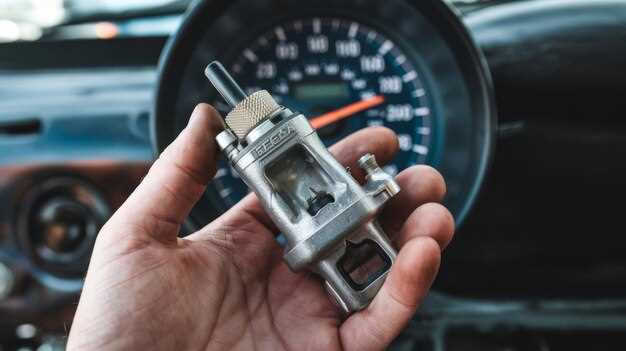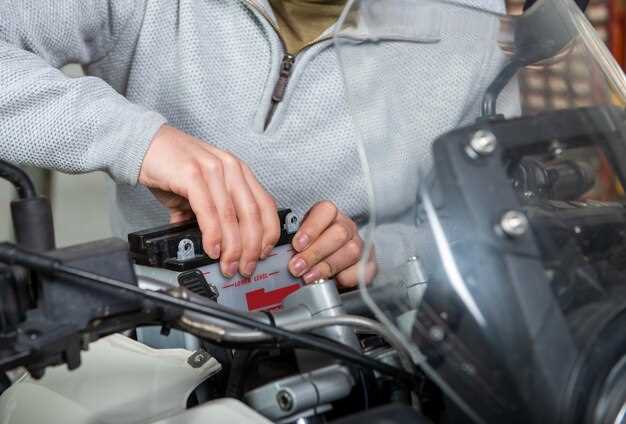
A carburetor plays a crucial role in the performance of your engine, particularly when it comes to throttle response. A well-tuned carburetor enhances the fuel-air mixture delivery to your engine, allowing for seamless acceleration and improved overall performance. Many drivers and enthusiasts overlook the importance of fine-tuning this component, often settling for factory settings that do not optimize their engine’s capabilities.
Understanding how the carburetor functions is essential for anyone looking to enhance throttle response. It operates by drawing air through a narrow opening, which creates a vacuum that pulls fuel into the airflow. Various settings, including the idle mixture, float level, and jet sizes, can significantly impact how quickly and efficiently your engine responds to throttle input. By making precise adjustments, you can achieve a quicker throttle response, resulting in a more exhilarating driving experience.
Tuning your carburetor to improve throttle response is not only beneficial for performance, but it can also lead to better fuel efficiency. A properly calibrated carburetor ensures that the engine receives the right amount of fuel at the right times, preventing unnecessary waste and optimizing combustion. In this article, we will explore essential techniques and tips for tuning your carburetor, allowing you to harness the full potential of your engine.
Selecting the Right Carburetor for Your Engine Type

Choosing the appropriate carburetor is essential for optimizing your engine’s performance and improving throttle response. Different engine types require specific carburetor designs to ensure efficient fuel-air mixture delivery. Here are key considerations to help you select the right carburetor:
- Engine Size: The displacement of your engine plays a significant role in determining the carburetor size. A larger engine typically requires a carburetor with a greater airflow capacity to ensure optimal performance.
- Engine Type: The engine configuration (inline, V-type, flat, etc.) influences the choice of carburetor. Certain carburetors are designed to suit specific configurations, which can enhance tuning potential.
- Intended Use: Identify the primary use of your engine–whether for street driving, racing, or off-roading. Each application may require a different carburetor style, such as performance-oriented or fuel-efficient models.
- Venturi Size: The venturi size affects the mixing of air and fuel. Larger venturis provide more power at high RPMs, whereas smaller venturis promote better throttle response in lower RPM ranges.
- Single vs. Multiple Barrel: Single-barrel carburetors are often simpler and easier to tune, suitable for smaller engines. Multiple-barrel setups can provide increased airflow and power for larger, high-performance engines.
- Adjustable Components: Look for carburetors with adjustable jets and floats to allow fine-tuning of the fuel mixture. This can significantly aid in achieving better throttle response.
By carefully considering these factors, you can select a carburetor that not only enhances the tuning capabilities of your engine but also delivers the desired performance outcomes.
Understanding Air-Fuel Mixture Ratios for Optimal Performance

To achieve the best throttle response in a carbureted engine, it is crucial to understand the significance of air-fuel mixture ratios. These ratios dictate how much air and fuel are combined during the combustion process, directly influencing engine performance, efficiency, and emissions. Tuning the carburetor to achieve the ideal ratio can lead to improved acceleration, power output, and overall responsiveness.
The stoichiometric ratio, which is generally around 14.7:1 for gasoline engines, refers to the optimal air-fuel mixture for complete combustion. However, many factors–such as engine type, operating conditions, and performance goals–may necessitate adjustments from this standard ratio.
| Mixture Ratio | Description | Effect on Performance |
|---|---|---|
| Rich (less than 14.7:1) | Higher fuel content than air | Increased power output, but may lead to poor fuel economy and higher emissions. |
| Stoichiometric (14.7:1) | Ideal balance for complete combustion | Maximized efficiency and optimal power, best for everyday driving. |
| Lean (greater than 14.7:1) | Higher air content than fuel | Improved fuel economy, potential for overheating and engine knock. |
Tuning involves adjusting the carburetor jets or altering the float settings to achieve the desired mixture ratio. This process often requires trial and error as well as knowledge of the engine’s behavior under various conditions. Monitoring tools, such as air-fuel ratio gauges, can provide real-time data, allowing for precise adjustments and enhanced performance.
Ultimately, understanding and optimizing air-fuel mixture ratios play a pivotal role in the tuning process of a carburetor. Achieving the right balance will ensure not only improved throttle response but also longevity and reliability of the engine.
Adjusting Idle Speed to Enhance Throttle Sensitivity
Adjusting the idle speed is a crucial step in tuning your carburetor for improved throttle response. The idle speed setting directly affects engine performance and responsiveness, especially during low-speed maneuvers. When the idle speed is too low, the engine may stall or struggle to transition smoothly between idle and acceleration. Conversely, an excessively high idle can lead to poor throttle sensitivity and compromised vehicle control.
To begin tuning, start by consulting the manufacturer’s specifications for the optimal idle speed range for your specific engine. Once you have this baseline, warm up the engine to ensure accurate measurements. After the engine is at operating temperature, use a tachometer to measure the current idle speed.
If adjustments are necessary, locate the idle speed adjustment screw on the carburetor. Carefully turn the screw clockwise to increase the idle speed or counterclockwise to decrease it, making small adjustments at a time. As you tune the idle speed, frequently check the tachometer to monitor changes. Aim to achieve a balanced idle that allows for smooth transitions when you accelerate.
In addition to adjusting the idle speed, consider the effect of the throttle linkage. Ensure that the linkage is properly adjusted for optimal throttle plate movement, which can further enhance throttle sensitivity. A well-tuned idle speed, combined with appropriate throttle linkage adjustment, leads to more responsive engine performance and a more enjoyable driving experience.
Regularly reevaluating and fine-tuning the idle speed will help maintain optimal throttle response over time, especially as engine components wear or if modifications are made. By dedicating attention to this aspect of carburetor tuning, you can achieve better engine performance and a quicker, more responsive throttle response, transforming your driving dynamics for the better.
Modifying Jet Sizes for Improved Acceleration
To enhance throttle response and achieve better acceleration, adjusting the jet sizes in your carburetor is a critical step. The jet size directly influences the air-fuel mixture delivered to the engine, affecting its overall performance.
When you increase the jet size, you allow more fuel to enter the combustion chamber. This modification is particularly beneficial for vehicles that have been modified with performance parts, as they can handle a richer mixture. However, it’s essential to strike the right balance; too much fuel can lead to poor combustion, resulting in decreased power and potential fouling of spark plugs.
Conversely, decreasing the jet size restricts fuel flow, leading to a leaner mixture. This setup can improve fuel efficiency and clean up exhaust emissions, but it may cause hesitation during acceleration if the engine requires more fuel under load.
To determine the optimal jet size for your specific application, consider factors such as engine displacement, modifications, and intended driving conditions. Utilize a wideband oxygen sensor to monitor the air-fuel ratio as you make adjustments. Aim for a slightly rich mixture during wide-open throttle conditions to ensure optimum power output.
Additionally, keep in mind that changes in altitude and temperature can affect air density and, consequently, the carburetor’s performance. After modifying the jet sizes, test your vehicle under various conditions to ensure consistent acceleration and throttle response.
Ultimately, the careful tuning of jet sizes is essential for maximizing your vehicle’s potential. By understanding the relationship between jet size and engine performance, you can achieve a responsive and powerful driving experience.
Tuning the Choke for Quick Throttle Response
Tuning the choke is an essential step towards achieving quick throttle response in carbureted engines. The choke regulates the air-fuel mixture entering the engine during startup and can significantly affect performance, especially in colder conditions.
When adjusting the choke, it’s crucial to ensure that it opens fully once the engine reaches operating temperature. A partially closed choke can cause a lean condition, leading to sluggish acceleration and unresponsive throttle behavior. Start by identifying the proper choke setting for your specific carburetor model, and make necessary adjustments to the choke mechanism.
A common method of tuning the choke involves checking the bimetallic spring temperature settings. This spring controls the opening and closing of the choke plate based on the engine’s temperature. If the spring is too tight, it may not allow the choke plate to open completely. Conversely, if it is too loose, the choke may open too quickly. Tuning this spring to the manufacturer’s specifications will enhance throttle responsiveness.
Additionally, consider the choke pull-off mechanism, which should release the choke plate as the engine warms up. Tuning this component to ensure it operates correctly will prevent the choke from staying closed longer than necessary, thus improving throttle response after initial startup.
Regular maintenance is also vital for optimal choke tuning. Ensure that all components, including linkages and springs, are free from corrosion or wear. Clean any dirt or deposits that may hinder performance, as a well-maintained choke system can significantly boost engine responsiveness.
In conclusion, effective tuning of the choke plays a crucial role in achieving quick throttle response. By ensuring proper adjustment and maintenance, you can maximize your carbureted engine’s performance, leading to an overall improved driving experience.
Testing and Fine-Tuning After Carburetor Adjustments
After making adjustments to your carburetor, it is crucial to test its performance to ensure the modifications have achieved the desired effect. Begin by restarting your engine and allowing it to warm up to operating temperature. A properly adjusted carburetor should provide smooth acceleration and a consistent idle. Listen for any unusual noises or fluctuations in the engine’s sound, as these may indicate further adjustments are needed.
To assess throttle response, perform a series of gradual accelerations from a standstill. Pay close attention to how quickly the engine reacts to your input. An immediate and smooth increase in RPMs indicates that the carburetor is tuned correctly. If you experience hesitations or stuttering, you may need to revisit your adjustments. This can entail modifying the air-fuel mixture or the float level, depending on the specific symptoms observed.
Another effective method of testing is the “road test.” Take your vehicle out on the road and evaluate performance under various driving conditions. Test the carburetor at different RPM ranges, and ensure that the engine responds well during acceleration, cruising, and deceleration. If you notice any stumbling or a lack of power, your carburetor may require additional fine-tuning to optimize its performance across all scenarios.
Finally, consider using a wideband O2 sensor for more precise measurements of the air-fuel mixture. This tool can offer insights that may not be apparent through other testing methods. Adjustments can be fine-tuned based on the readings, ensuring the carburetor operates efficiently under various loads and conditions. Consistent testing and fine-tuning will lead to improved throttle response and overall engine performance.




